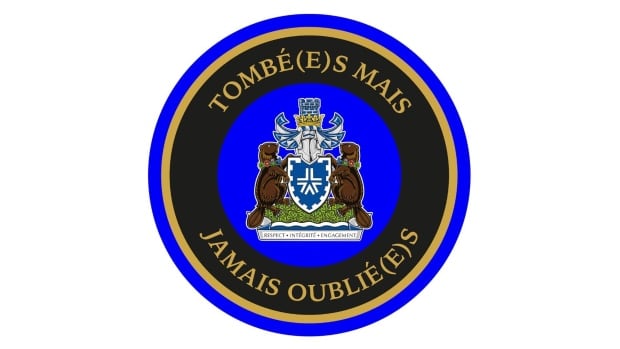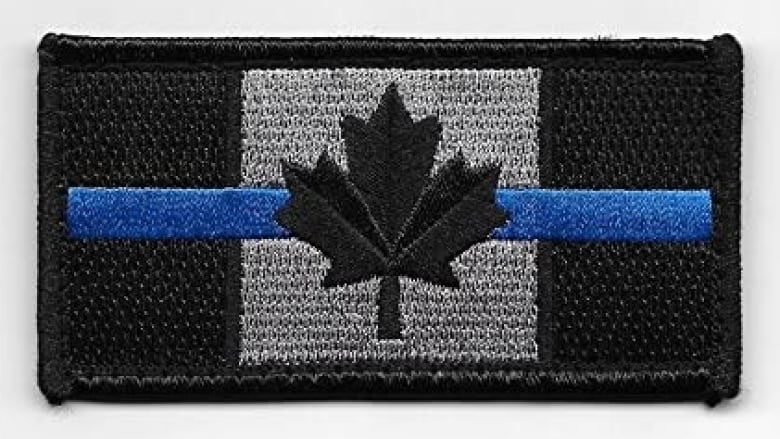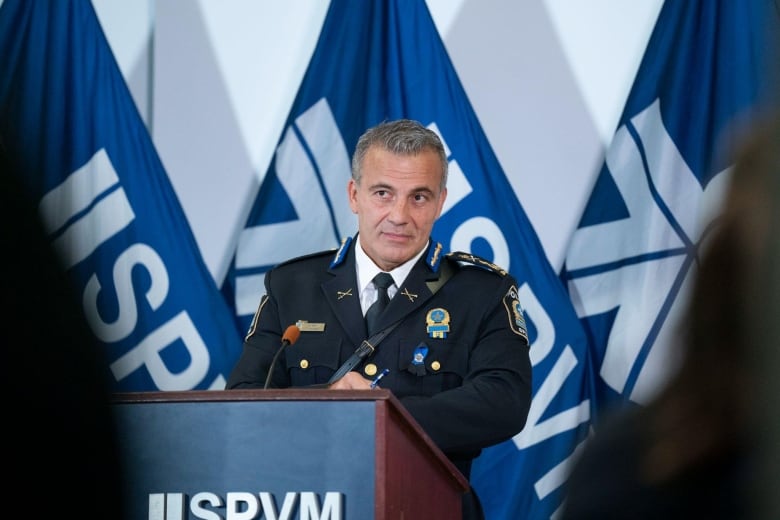
Montreal’s police officers will be banned from wearing the thin blue line badge, and instead now have a patch of their own.
The new crest — which features two beavers, the flowers of Montreal’s flag, a castle, crown and knight helmet encircled in a blue ring — says “fallen but not forgotten” in French.
It comes as the Service de police de la Ville de Montréal (SPVM) tries to change its image and build trust with the population.
SPVM Chief Fady Dagher says the new badge is a way for officers to commemorate those killed on the job without alienating anyone.
The thin blue line patch has been seen at white supremacist gatherings, such as the Unite the Right rally in Charlottesville, Va., in 2017. It was also present at the Jan. 6, 2021, storming of the Capitol Building in Washington, D.C.

The symbol gained prominence among police officers in Canada in 2020 in response to the Black Lives Matter movement that took off in the aftermath of the murder of George Floyd by a Minneapolis police officer. Several police forces in Canada have already banned the symbol.
In January, Andrés Fontecilla, Québec Solidaire’s public security critic, asked Public Security Minister François Bonnardel to bar all police officers in Quebec from wearing a thin blue line badge. Bonnardel said it would be up to individual police services to make that call.
Dagher said the circular shape of the new patch is meant to be “inclusive,” whereas the old badge “separates good and bad.” He maintains it’s important to commemorate officers killed on the job.

He says the SPVM was in touch with community organizations like the Black Coalition of Quebec and Center for Research-Action on Race Relations (CRARR), which wanted the thin blue line symbol banned. But Dagher says officers told him “please don’t take our symbol away, or give us one of our own.”
The symbols represent “protection and refuge,” and “work and determination,” according to the SPVM.
The Montreal Police Brotherhood said it “appreciates the fact that SPVM management is not contemplating disciplinary sanctions” on officers who chose to wear the thin blue line, and is instead using an approach that “informs and raises awareness.”
“We simply hope that those who wish to do so can freely express their solidarity by highlighting the sacrifice of police officers who have given their lives to protect citizens,” said Yves Francoeur, head of the police union, in a statement.
‘Nonsensical debate’
Critics say the change tackles the issue of public trust in a superficial way.
Anne-Marie Livingstone, a sociology professor at McMaster University who has researched racism in policing, says the new logo placates the officers who want to wear the thin blue line while cleaning up the SPVM’s image — without committing to meaningful change.
“Officers do see themselves as being a kind of warrior, or in a defensive position vis-à-vis the public, so for me it’s a nonsensical debate,” she said.

“It’s getting us away from the issues that we members of the Black community, members of the Indigenous community, have been talking about for decades.”
Livingstone pointed to Dagher’s refusal to end random police checks, which anti-racism groups have been requesting for years as they disproportionately target people of colour and don’t affect crime rates.
She also noted how Canadian law allows police officers to use violence against civilians if they think their safety is at risk. Research shows the belief that officer safety comes first results in more police racism and violence toward civilians.
“[The badge] kind of washes the image of policing, which is fundamentally set up to exclude and hurt Indigenous and Black and other people of colour,” she said. “It’s not there to protect us. Never has been.”

